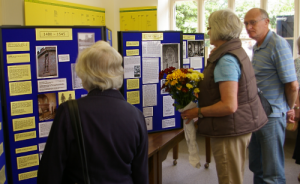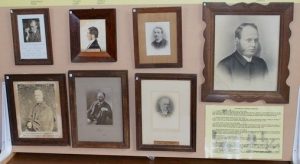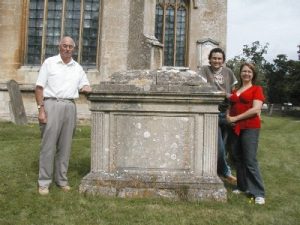On 29 September1538 a royal injunction was published throughout the realm by Thomas Cromwell, Henry VIII’s Vicar General. This read that:
“The curate of every parish church shall keep one book or register, which book he shall every Sunday take forth, and in the presence of the churchwardens, or one of them, write and record in the same all weddings, christ’nings, and burials made the whole week before; and for every time that the same shall be omitted, shall forfeit to the said church 3s, 4d.”
Initially there was much suspicion, especially by the clergy, that this was just a ruse to collect information for taxation purposes and therefore it would seem not all parished registers were actually commenced as early as 1538. A later injunction in 1597 instructed parishes to keep their records in a parchment book at which point many of the original registers were transcribed from the original paper copies. The following year saw an order that a copy of each parish register was to be sent to the Diocese Office of the appropriate Bishop within a month after Easter. These Bishop Transcripts are a useful check on the parish copy and can sometimes help with transcribing difficult to read handwriting.
It is not known when the Fairford parish register was first started but the existing books kept at Gloucestershire Archives commence in 1617 when the Reverend Christopher Nicholson was the Vicar. The registers could well have been started earlier than 1617 but may have been since lost, which, if so, is a great loss. The registers are all hand written, even up to the 1970s, and the standard of handwriting and clarity varies immensely, although some of the earlier registers are much more legible than many of the later ones!
A series of Acts between 1660 and 1680 instructed that all burials (except plague victims and the destitute) must be buried in ‘pure English woollen shrouds’. This was introduced in order to help England’s declining woollen industry and fines were made against families who did not comply. This accounts for many entries in the Fairford Parish registers which are annotated ‘buried in woollen’. The practice was generally ignored after about 1770.
Unfortunately for the local or family historian the Fairford registers do not often provide much detail other than names and dates. More fortunately however, the Fairford registers continue throughout the turbulent years of the English Civil War, unlike many other parish registers, although marriages are very sparse during this period, possibly because people were being married elsewhere or the marriages were not being recorded by the clergy.
Occasionally, brief notes have been added to the basic entries and some of these are noted below
• 21 Sep 1655 “A strange woman kild with the wagon who lived at Henly” (presumably it was the woman who lived at Henley!)
• 9 Sep 1690 William Robinson “killed by timber”
• 7 Dec 1697 “A stranger drownd near Mr Barkers house”
• 5 May 1734 Henry Fletcher “killed by a bell”
• 9 Oct 1737 Thomas Brown “kill’d by a fall from an apple tree”
• 9 Oct 1884 David Ormrod Archer “drowned whilst bathing at Freshwater, Isle of Wight Sep 27
The parish registers also record many instances where a significant number of people died over a short space of time as well as many instances where several members of the same family died within days or weeks of each other. These events probably indicate an epidemic of some kind; common diseases in the post-medieval era being plague, typhus, smallpox, cholera and consumption (tuberculosis). An example of this is the family of George Browne who lost his wife, two sons and a daughter in the space of a single week in 1621. Sadly, there are many other examples where an unusually large number of people, often from the same family, died over a short space of time.
On the last page of the 18th Century register is the following information:
“December ye 6th 1718 The Yew Tree was planted in Fairford Church-yard by Frampton Huntington A.M. Vicar.
NB: The Wall from ye Parsonage Stable to ye Street was built at ye cost of ye Revnd Mr James Oldisworth Impropriator, but it was pointed & cop’d at ye charge of ye Revnd Mr Frampton Huntington Vicar purely for ye good & benefit of ye trees planted against it.”
This is presumably the yew tree that was recorded in the Parish News as having been blown down in a storm on 16 March 1986. It would be interesting to know which wall this referred to as it would then point to the location of the parsonage stable and the parsonage itself. This was written before the Free School (Community Centre) was built so the wall dividing that plot and the churchyard is probably the most likely candidate.
The Fairford Parish Registers can be consulted in the FHS Archive Room but all are now available at Ancestry.co.uk which can be consulted free at Gloucestershire Archives.
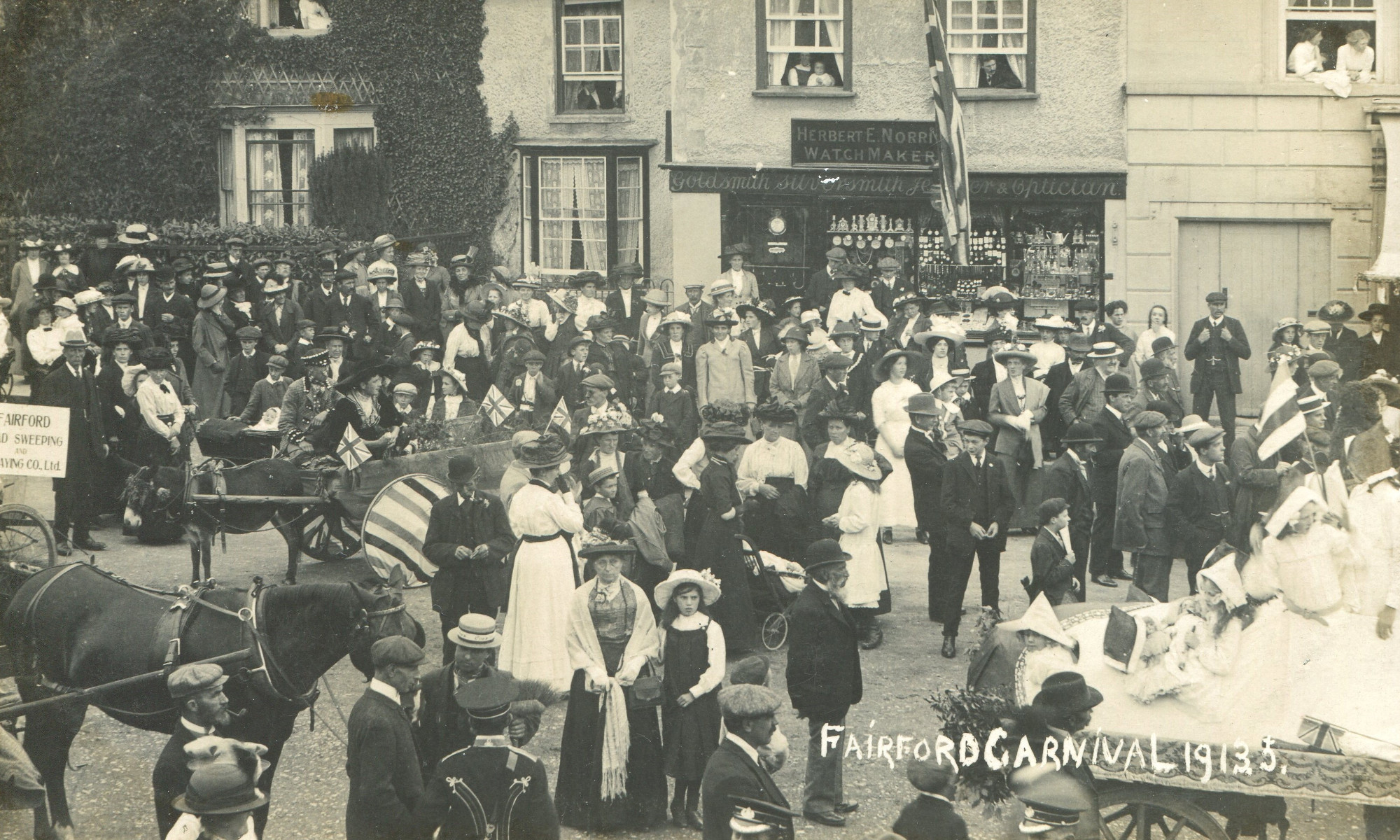
 The Society has been very fortunate to have been donated a unique historical document relating to Fairford property and people of the 18th and 19th centuries. The foolscap-size notebook is titled “Lifehold Estates belonging to John Raymond Barker Esq” and was donated to the Society by a Fairford resident, whose late husband once worked for the Ernest Cook Trust. The 46-page document records the creation and renewals of leases relating to John Raymond Barker’s property in Fairford, the earliest being dated 1768 and the latest 1884. Over 120 leases are recorded and the details given add greatly to our knowledge of Fairford’s residents and property ownership during the Barker and Raymond Barker family’s time as landlords. Some of the entries are quite revealing; for example the entry for Jonathan Wane’s lease of a house in Milton End on 26 May 1803 gives him the option of paying either four shillings for rent, or just one shilling and “2 couple of fat hens”. In fact poultry seems to have been an alternative form of currency in the 19th Century as six other lessees were given the option of paying part of their rent in chickens!
The Society has been very fortunate to have been donated a unique historical document relating to Fairford property and people of the 18th and 19th centuries. The foolscap-size notebook is titled “Lifehold Estates belonging to John Raymond Barker Esq” and was donated to the Society by a Fairford resident, whose late husband once worked for the Ernest Cook Trust. The 46-page document records the creation and renewals of leases relating to John Raymond Barker’s property in Fairford, the earliest being dated 1768 and the latest 1884. Over 120 leases are recorded and the details given add greatly to our knowledge of Fairford’s residents and property ownership during the Barker and Raymond Barker family’s time as landlords. Some of the entries are quite revealing; for example the entry for Jonathan Wane’s lease of a house in Milton End on 26 May 1803 gives him the option of paying either four shillings for rent, or just one shilling and “2 couple of fat hens”. In fact poultry seems to have been an alternative form of currency in the 19th Century as six other lessees were given the option of paying part of their rent in chickens!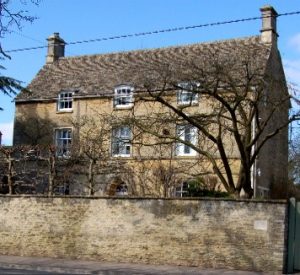 John Keble’s house in Fairford which was called Court Close at the time and in which John Keble senior lived all of his married life.
John Keble’s house in Fairford which was called Court Close at the time and in which John Keble senior lived all of his married life.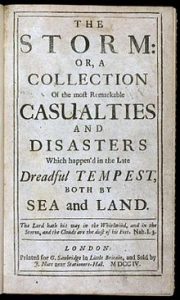 The Great Storm of 26 November 1703 was one of the most powerful and destructive storms in recorded English history. The storm came in from the Atlantic and cut a swathe of destruction across southern and central England and out into the North Sea. In London about 2,000 chimney stacks were blown down and at least 1,500 men were lost at sea as many ships, including the Royal Navy’s entire Channel Squadron, were sunk. One warship was blown from Harwich all the way to Gothenburg in Sweden before it was able to sail back to England. There was extensive flooding in the West Country where hundreds of people and thousands of livestock were drowned in the Somerset Levels. Other instances of destruction include about 400 windmills which were destroyed, about 4,000 oak trees in the New Forest blown down, and the collapse of the first Eddystone Lighthouse.
The Great Storm of 26 November 1703 was one of the most powerful and destructive storms in recorded English history. The storm came in from the Atlantic and cut a swathe of destruction across southern and central England and out into the North Sea. In London about 2,000 chimney stacks were blown down and at least 1,500 men were lost at sea as many ships, including the Royal Navy’s entire Channel Squadron, were sunk. One warship was blown from Harwich all the way to Gothenburg in Sweden before it was able to sail back to England. There was extensive flooding in the West Country where hundreds of people and thousands of livestock were drowned in the Somerset Levels. Other instances of destruction include about 400 windmills which were destroyed, about 4,000 oak trees in the New Forest blown down, and the collapse of the first Eddystone Lighthouse. One of the many Englishmen who went to New Zealand to seek fame and fortune in the 19th Century was William Child Iles. William was the son of Nicholas and Charlotte Iles of Fairford. Nicholas Roch Iles was an auctioneer and an agent for the Globe Insurance Company in Fairford. According to Pigot’s 1842 Gloucestershire trade directory Nicholas was also an agent for Mander & Power’s Dublin stout. William was born in Fairford on 26 April 1836 but was not baptised in St Mary’s Church until 21 January 1840. William joined the Army where he became a dispatch rider for Lord Cardigan during the Crimean War. He sailed on 5 October 1859 on the four-month voyage to New Zealand in the ‘Bosworth’. In New Zeland he had a number of jobs including a coach and wagon driver in Invercargill, a farmer, a clerk, and a warder in Dunedin Public Hospital, and a warder in a mental hospital in Otago. Perhaps William had been attracted to this last post because of his family connections with Alexander Iles’s asylum in Fairford. Not all of William’s many occupations were successful as he filed for bankruptcy in 1882 when he was a labourer living in the borough of St Kilda in Dunedin where he also served as Returning Officer for Park Ward of that borough.
One of the many Englishmen who went to New Zealand to seek fame and fortune in the 19th Century was William Child Iles. William was the son of Nicholas and Charlotte Iles of Fairford. Nicholas Roch Iles was an auctioneer and an agent for the Globe Insurance Company in Fairford. According to Pigot’s 1842 Gloucestershire trade directory Nicholas was also an agent for Mander & Power’s Dublin stout. William was born in Fairford on 26 April 1836 but was not baptised in St Mary’s Church until 21 January 1840. William joined the Army where he became a dispatch rider for Lord Cardigan during the Crimean War. He sailed on 5 October 1859 on the four-month voyage to New Zealand in the ‘Bosworth’. In New Zeland he had a number of jobs including a coach and wagon driver in Invercargill, a farmer, a clerk, and a warder in Dunedin Public Hospital, and a warder in a mental hospital in Otago. Perhaps William had been attracted to this last post because of his family connections with Alexander Iles’s asylum in Fairford. Not all of William’s many occupations were successful as he filed for bankruptcy in 1882 when he was a labourer living in the borough of St Kilda in Dunedin where he also served as Returning Officer for Park Ward of that borough.